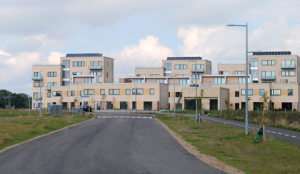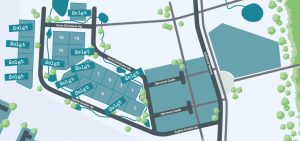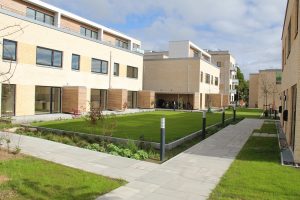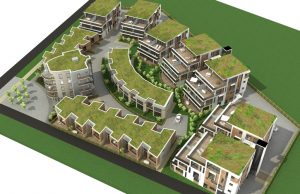Concrete Perspective September 2018
Construction Sector
Joint initiative Industry4Europe
At the beginning of 2017, BIBM co-signed a paper in which 127 signatories asked the European Commission to prioritise the competitiveness of the European Industry. Since, the mentioned collaboration has developed further and developed several other documents (please find below).
Several ad-hoc groups -where BIBM is an active member- are working on advocacy and communication issues, amongst others, the translation of the new Manifesto into 22 different languages.
Industry4Europe will soon launch its own website and twitter account while doing a very active advocacy in the European Parliament, commission and Council of EU to ensure that the competitiveness of the European Industry will be a top priority of the forthcoming European Parliament and European Commission.
Industry4Europe – Joint Paper on Governance – July 2018
Industry4Europe_Joint Paper on Indicators_March 2018
Live from the European Union
European Commission proposes two approaches to assess the fire performance of building facades[1]
The European Commission’ report of the study on the development of a European approach to assess the fire performance of building facades was published in early September. The report proposes:
- a “main” approach consisting in the adoption of a British test (BS8414) and a German test (DIN 4102 part 20)
- an “alternative” approach which offers strong improvements to the British and German test methods.
Whilst Fire Safe Europe (FSEU) commend the European Commission for undertaking this crucial work, the “main” approach proposed in the report will not guarantee a good level of fire safety. Indeed, the two tests proposed (BS8414 and DIN 4120-20) are both highly contested:
- Throughout the Grenfell independent review and public enquiry, the British test BS8414 has been criticized for not sufficiently fulfilling the purpose of giving guidance on fire safety of facades. Due to the criticism of the test, the British Standards Institution (BSI) has agreed to start a revision process of BS 8414.
- In Germany, the test DIN 4102 part 20 has been supplemented with an additional test method, as the authorities concluded through a detailed analysis of a large number of façade fires that it does not sufficiently represent the risks associated with an external fire.
The key argument supporting the “main” approach seems to be that existing test data would be kept for the countries which are already using the British and German methods (only four countries out of 28), though only 55 tests are available on the BRE website for the British method.
The argument of historical data should not be an essential condition for the development of the European approach to assess the fire performance of facades – guaranteeing a good level of fire safety should be the priority.
In contrast, the “alternative” approach offers key improvements such as: a better assessment of fire spread of both large and medium fire exposure test, and greater knowledge on façade testing. This approach also proposes only one test for a specific façade which leads to a simpler and clearer classification system that can be used across EU.
Juliette Albiac, managing director of Fire Safe Europe (FSEU) says “Having an approach to assess the fire performance of facades which reflects real-life fire scenarios is crucial to ensure the fire safety of our buildings. In order to have a sufficient level of fire safety, the “alternative” approach should be taken forward.”
European Parliament’s Budget Committee supports fire safety data collection
On 25 September, the European Parliament’s Budget Committee voted in support of the amendment on fire safety data collection. The data collection is a pilot project that will directly support the work of EU Fire Information Exchange Platform (FIEP).
[1] Source: Press Release of FSEU
National Award Winner Project
Tankefuld residential area – Denmark
In the new, sustainable residential area in Svendborg, Tankefuld, the builders, in cooperation with the municipality, focused on CO2 emissions and recycling. The roads’ bearings are therefore produced with a content of recycled materials of 81%.

Picture: https://arkitektforeningen.dk/SVENDBORG:%20Tankefuld
The Tankedfuld development project is an environmentally sustainable project that excels in low CO2 load. In the area, the choice of housing was taken with a priority of low CO2 load and environmentally friendly standards, while the residential building is designed with thorough consideration of interior design and material quality.
The roofs are equipped with solar cells, terrace or grass (sedum) on the north side while the rainwater on the ground is led via open bins or pipes to common collection pools.
Client: Funen’s public housing company
Architect: The Plus Office, Architects MAA
The new building, which is the first major building in Tankefuld, consists of 67 low-energy homes, divided into 30 terraced houses and 37 storeys in both 1, 2 and 3 levels. The building is in yellow brick wall with marked walls, with the brick facing the back. Similarly, there are fillings in the brickwork and sheds made with planed wood profiles. The flat roofs are furnished with roof terraces and solar panels while the remaining roof areas are greeted with moss. There are 7 different types of housing.

Picture: https://www.svendborg.dk/borger/byg-og-bo/byggegrunde/tankefuld-en-ny-baeredygtig-bydel-i-udvikling
The building and its outdoor areas are designed as a geometric patchwork rug with varying building heights, long look, indentation, scale differences, plantations and useful features and activity areas. The town’s seats are spread throughout the entire settlement and are used for both stays, sports, play and parking. All rentals have either private roof garden or balcony.

Picture: http://inspirationskatalog.dk/projekter/energi-miljoe/tankefuld/
There are also shared roof gardens and a large common house. A significant feature of the landscape machining is the precisely shaped and planted sump beds that lead both surface and roof water to the low-lying rainwater basin located north of the settlement. The building’s main facades are southwest facing to ensure the best possible utilization of passive solar heating. The shelves are walls in the space and help to give the individual room a special identity: climbing wall, wall for ball games or just greeted with slings.[1]

Picture: http://archidea.dk/tankefuld.html
The residential building “Thoughtful” is awarded the Svendborg Municipality Architectural Award for its exemplary and nuanced way of creating a new city on bar land.
The building contains large spacious qualities both inside and out; The changing building heights, the expressive facades and the diverse spaces between the houses together provide a vibrant and varied architectural expression that is experienced both sympathetic and identity-creating.
The individual dwellings are field-exposed with consistent cross-space and inner crossing. And despite the fact that some houses are close to each other in southernly inspired spawning courses, the individual dwelling still has views and views. All sustainable initiatives such as solar orientation, solar systems, sump beds, etc. is exemplary well integrated into the overall architectural expression and helps to elevate the visual qualities of the building.
[1] Source: https://arkitektforeningen.dk/SVENDBORG:%20Tankefuld
Tankefuld residential area – Denmark
In the new, sustainable residential area in Svendborg, Tankefuld, the builders, in cooperation with the municipality, focused on CO2 emissions and recycling. The roads’ bearings are therefore produced with a content of recycled materials of 81%.
Picture: https://arkitektforeningen.dk/SVENDBORG:%20Tankefuld
The Tankedfuld development project is an environmentally sustainable project that excels in low CO2 load. In the area, the choice of housing was taken with a priority of low CO2 load and environmentally friendly standards, while the residential building is designed with thorough consideration of interior design and material quality.
The roofs are equipped with solar cells, terrace or grass (sedum) on the north side while the rainwater on the ground is led via open bins or pipes to common collection pools.
Client: Funen’s public housing company
Architect: The Plus Office, Architects MAA
The new building, which is the first major building in Tankefuld, consists of 67 low-energy homes, divided into 30 terraced houses and 37 storeys in both 1, 2 and 3 levels. The building is in yellow brick wall with marked walls, with the brick facing the back. Similarly, there are fillings in the brickwork and sheds made with planed wood profiles. The flat roofs are furnished with roof terraces and solar panels while the remaining roof areas are greeted with moss. There are 7 different types of housing.
Picture: https://www.svendborg.dk/borger/byg-og-bo/byggegrunde/tankefuld-en-ny-baeredygtig-bydel-i-udvikling
The building and its outdoor areas are designed as a geometric patchwork rug with varying building heights, long look, indentation, scale differences, plantations and useful features and activity areas. The town’s seats are spread throughout the entire settlement and are used for both stays, sports, play and parking. All rentals have either private roof garden or balcony.
Picture: http://inspirationskatalog.dk/projekter/energi-miljoe/tankefuld/
There are also shared roof gardens and a large common house. A significant feature of the landscape machining is the precisely shaped and planted sump beds that lead both surface and roof water to the low-lying rainwater basin located north of the settlement. The building’s main facades are southwest facing to ensure the best possible utilization of passive solar heating. The shelves are walls in the space and help to give the individual room a special identity: climbing wall, wall for ball games or just greeted with slings.[1]
Picture: http://archidea.dk/tankefuld.html
The residential building “Thoughtful” is awarded the Svendborg Municipality Architectural Award for its exemplary and nuanced way of creating a new city on bar land.
The building contains large spacious qualities both inside and out; The changing building heights, the expressive facades and the diverse spaces between the houses together provide a vibrant and varied architectural expression that is experienced both sympathetic and identity-creating.
The individual dwellings are field-exposed with consistent cross-space and inner crossing. And despite the fact that some houses are close to each other in southernly inspired spawning courses, the individual dwelling still has views and views. All sustainable initiatives such as solar orientation, solar systems, sump beds, etc. is exemplary well integrated into the overall architectural expression and helps to elevate the visual qualities of the building.
[1] Source: https://arkitektforeningen.dk/SVENDBORG:%20Tankefuld
News in brief

Agenda
OCTOBER
4 October 2018 (PM)
BIBM Communication Commission
Brussels, Belgium
5 October 2018
BIBM Directors meeting
Brussels, Belgium
10 October 2018
AhG Concrete Initative
Brussels, Belgium
16 October 2018
BIBM Environment Commission
Brussels, Belgium
18 October 2018
CEMBUREAU low carbon roadmap
Brussels, Belgium
18-19 October 2018
BIBM Wastewater Engineering
Birmingham, UK
22 October 2018
CEN workshop on Harmonized European Standards under the Construction Products Regulation
Brussels, Belgium
30 October 2018
CPE TG CPR implementation
Brussels, Belgium
NOVEMBER
13 November 2018
BIBM Board meeting
Brussels, Belgium
14 November 2018
ECP TF Fire and Eurocodes
Brussels, Belgium
19 November 2018
ECP Board meeting
Brussels, Belgium
20 November 2018
Concrete Dialogue 2018: Pathways towards a carbon-neutral built environment
Brussels, Belgium
28-29 November 2018
SeRaMCo conference
Luxembourg, Luxembourg
DECEMBER
4 December 2018
CPE CPR group
Brussels, Belgium
6 December 2018
BIBM Technical Commission
Brussels, Belgium
13 December 2018
BIBM TG Eurocode 2
Brussels, Belgium
To the Newsletter of Construction Products Europe please follow this link.
List of Acronyms:
CPE – Construction Product Europe
CSC – Concrete Sustainability Council
DG GROW – Directorate-General for Internal Market, Industry, Entrepreneurship and SMEs
ECP – European Concrete Platform
EMA – European Masonry Alliance
IPHA – International Pre-stressed Hollowcore Association
TF – Task Force
